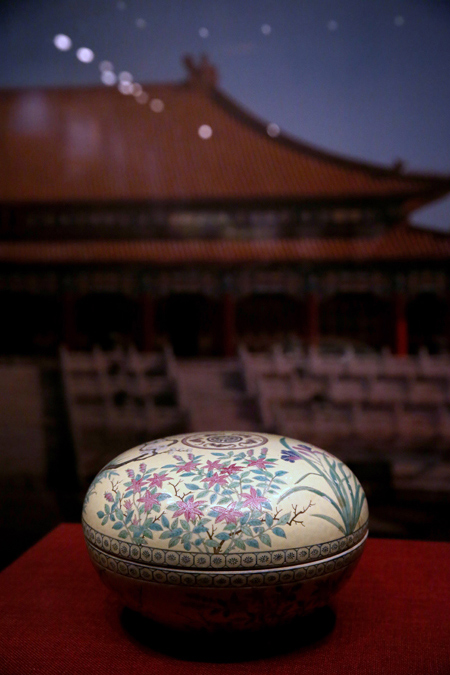
 |
| Famille rose round box with flower design. (China Daily/Jiang Dong) |
Two types of flowers became the darlings of the dowager, says Zhao Congyue, porcelain expert from the Forbidden City Museum.
One was the orchid, which was the name Ci Xi was known by when she was younger, at home. The other was the lotus, sacred to Guanyin, or the Goddess of Mercy, who is often depicted as sitting on an open lotus bloom.
"As she grew older, Ci Xi started to imagine herself as the goddess," says Zhao, pointing to a black-and-white photograph hanging on the museum wall, in which the empress indulged herself in role play by getting up in the full regalia of the goddess.
"The fulfillment of this personal fantasy meant that lotus flowers had not only overtaken entire water surfaces in the royal gardens, but also found their way onto some of the finest china of the time," Zhao says.
The whole duration of Ci Xi's rule, spanning the nominal reign of both Emperor Tongzhi and Emperor Guangxu, coincided with the dramatic collapse of the Qing Dynasty, a process accelerated by her tyrannical, ineffectual and corrupt way of governance.
The inner upheaval and outer encroachment of that time came to be reflected in her own stories.
For the celebration of her 40th and 52nd birthdays, the production of two large batches of porcelain wares was commissioned. Both were delayed, probably due to the severe shortage of skilled artisans during times of unrest.


















 Man's 20-year habit leads to kidney stone
Man's 20-year habit leads to kidney stone


![]()
